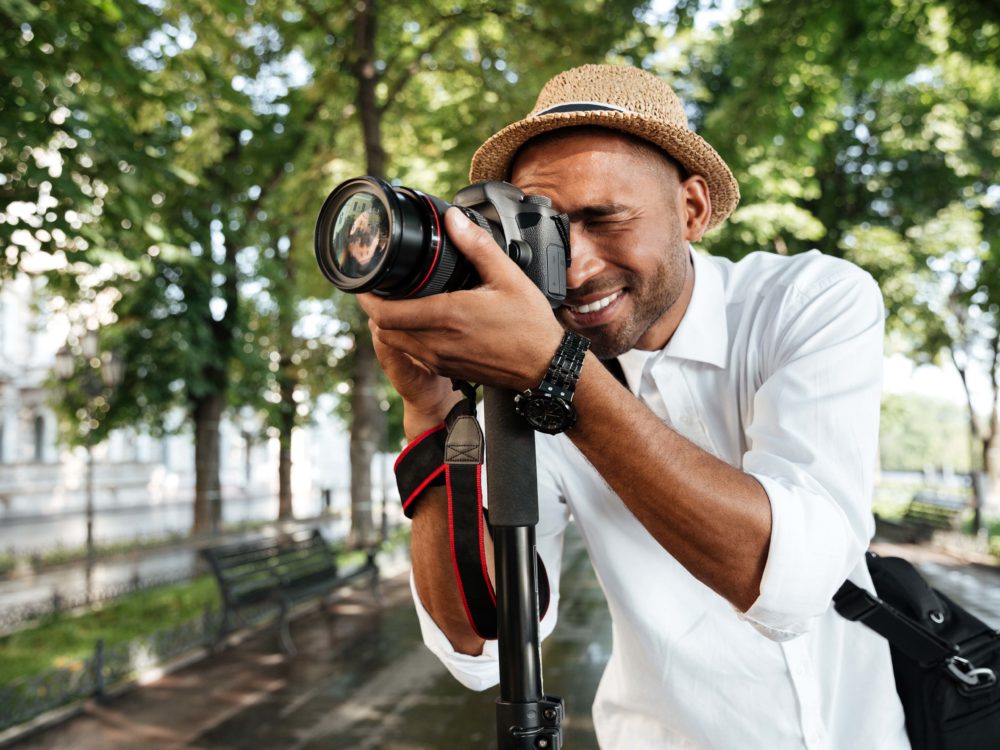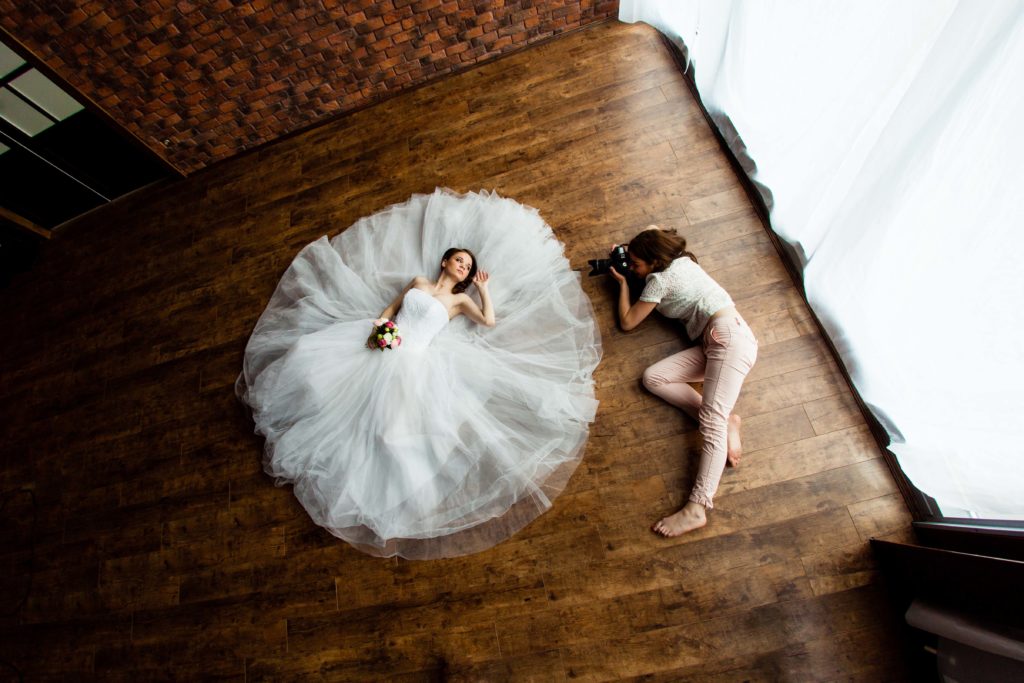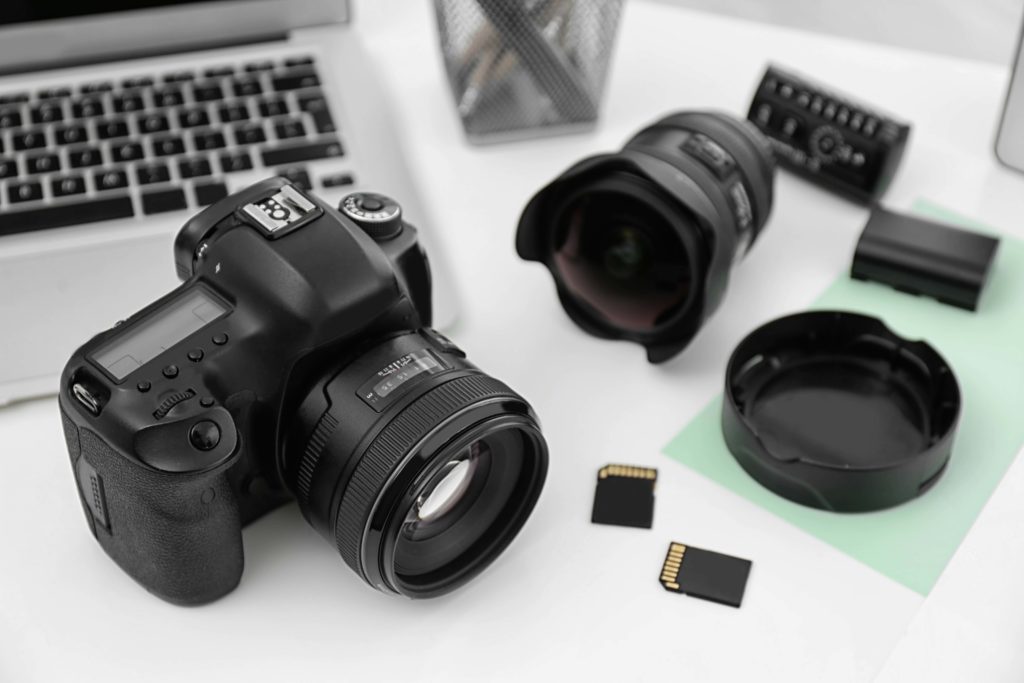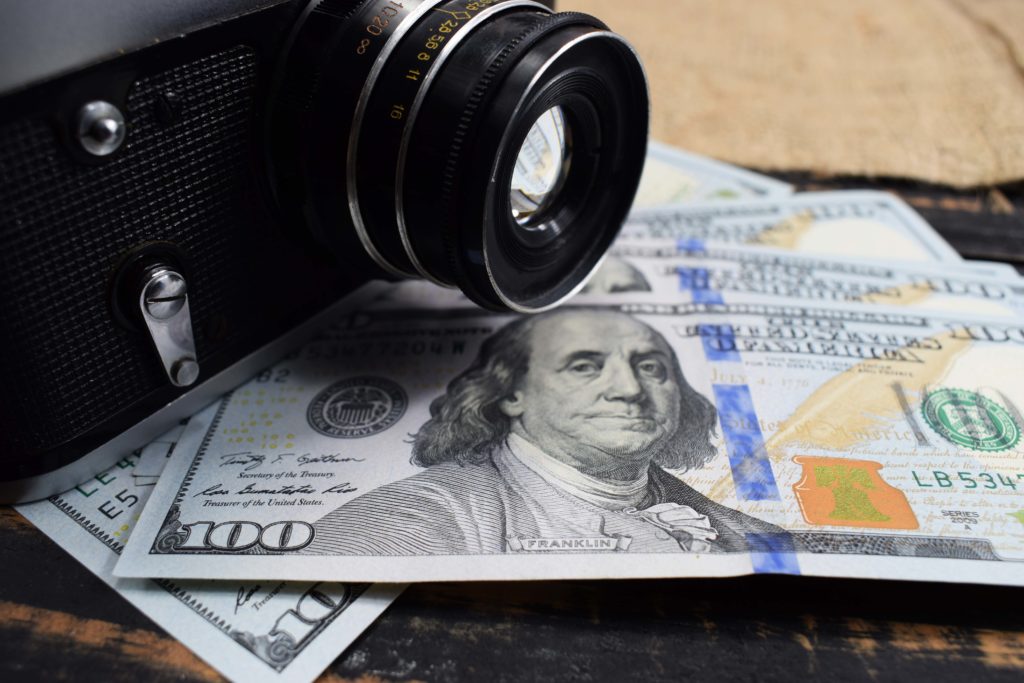
Do you dream of being a professional photographer, but feel stuck in a lackluster job? You’re not alone. It takes courage to break out of your comfort zone and learn how to become a photographer. But you can do it! Just follow these six steps to launch your career in freelance photography:
6 Steps for Breaking into Freelance Photography
- Build a Business Plan
- Determine Your Areas of Focus
- Invest in Photography Equipment
- Set Your Rates
- Create a Portfolio
- Market Your Business
The great thing about shifting into freelance photography is that you don’t have to make the change overnight. You can test the waters with a few freelance photography assignments and build your portfolio. After a while, you’ll be ready to leave your day job behind and pursue freelance photography work full time.
Many people who love photography wonder how to become a freelancer. While photography is a creative field, freelancers are small business owners. They need to understand everything from marketing to contracts, and how to set freelance photography rates for their work. You should take a strategic and disciplined approach toward launching your freelance photography business.
Following these six freelance photography tips will help you achieve your goals.
Step 1: Determine Your Areas of Focus
One of the first things you need to do when starting out in freelance photography is to determine your photography niches. You may enjoy exploring different photography pursuits, but you should choose a few when you start. This will help you define your personal brand, focus your marketing messages, and attract the right potential clients.
The good news is that there are plenty of freelance photography gigs in every niche you can imagine. You can find work in freelance fashion photography or freelance sports photography. As you might expect, freelance wedding photography is a big area of opportunity, too.
Ask yourself if product photography or stock photography would be profitable lines of business for you. Keep in mind that you can find freelance photography jobs through contracts with non-profit organizations as well as commercial businesses.
Take some time to evaluate your skills and review your collections of images. Get feedback from people you trust, including an established photographer, if possible. Post your best pictures on social media and see which ones get the most likes and positive comments.
This will help you assess your talents and determine where to focus first. Don’t worry about being too narrow in scope at the outset. You can always grow in new directions over time.

Step 2: Build a Business Plan
Creating a freelance photography business plan is one of the most important things you need to do. With your business plan, you’ll document your objectives, identify target markets, and outline financials. Going through this important exercise will help you shift your mindset from photography as a hobby to photography as a career.
Make sure that your business plan clearly outlines your goals and the steps you are going to take to reach them. Include specific objectives and dates when you will achieve them. Be prepared to document how you will measure progress towards your goals.
● Outline the focus of your business
● Define your rates
● List any potential business advisors, such as a bookkeeper or attorney
● Describe your ideal clients
● Detail what will make you unique
● Identify your competitors and what makes you different from them
● Project monthly sales, costs, and profits
● Create a calendar of planned marketing activities
● State sources of initial funding for your business—such as personal investments and loans
As you can see, building a business plan will take a lot of hard work. But this allows you to focus on the big picture and helps you make steady progress towards your goals.

Step 3: Invest in Photography Equipment
Once you are clear about your directions and focus, you can invest in the necessary equipment to reach your goals. Rest assured, you don’t need to pay for top-of-the-line equipment right away. In fact, your talent as a photographer is what will make clients seek you out—not the caliber of your equipment.
At a bare minimum, you need a decent quality camera to get started as a freelance photographer. It’s quite possible to take exceptional photos with a DSLR camera that costs only a few hundred dollars. You can always take any photo to the next level with professional-grade Lightroom presets. A good camera combined with quality editing software can be a winning combination for anyone entering the world of photography.
Spend time mastering the settings and functions on your camera. Learn the fundamentals of composition, lighting, posing, and post-production. With these skills, you can build the foundation of your freelance photography business.
Be sure to research additional photography equipment—such as lenses, flashes, lighting rigs, and modifiers—before you buy them. Chances are, you’ll be able to use profits from your photo shoots to fund equipment purchases.

Step 4: Set Your Rates
Setting your freelance photography pricing can be a daunting task for new photographers. Before you officially launch your photography business, you may want to offer a few complimentary or discounted photo shoots to friends. This will help you gain experience and create a portfolio to showcase your work. This can be a great way to work toward freelance photography jobs for beginners.
Many freelancers charge lower rates at first and raise them over time. Once you establish yourself in the freelance photography world, your services will be more in demand. This means clients will be willing to pay you more for your time and talents. You’ll be on your way to earning more money as a freelance photographer.
There are two primary ways to set freelance photography rates. You can set an hourly rate, which is an established amount you earn for each hour you work. Or, you can create packages that include blocks of your time and certain deliverables. On occasion, you may want to use a hybrid approach.
You’ll see the package approach commonly used in portrait photography. In these scenarios, you can establish different levels of packages—each containing a set number of images and edits. They may include printed images, digital images, or both. Remember that you need to cover the time you spend taking and editing the photos, along with the images themselves, in the package costs.
You may use an hourly rate in business photography, event photography, or on many photojournalism jobs. On these assignments, you may be responsible for being at a certain site for a specific length of time, capturing events as they unfold. While you may also be expected to supply photos after-the-fact, you’ll be paid for your time—not a specific number of images.

Step 5: Create a Portfolio
Every professional photographer needs an online portfolio. This is a venue to showcase your photography freelance work and attract potential clients.
Often, photographers choose to build their own freelance photography sites to house their portfolio and other information about their photography business. WordPress is a popular choice. You can find many WordPress themes created with photographers in mind. There are many other choices house your portfolio—from relying on free photo-sharing sites like to Google Photos or Flickr to using a social media platform, like Instagram.
A portfolio is not something you make once and then you’re done. It needs to keep evolving over time. As you learn new skills and move into new areas, make sure your online portfolio reflects your current work. A strong portfolio can differentiate you from competitors and help you land choice assignments.
Your website can also serve as your freelance photography resume. Use it to document freelance assignments you take on and add testimonials from satisfied customers. Make sure your website includes contact information so that potential clients can get in touch with you easily. Include key details, such as your standard freelance photography contract, so that people know what to expect when they hire you.

Step 6: Market Your Photography Business
Once you have a portfolio in place, you can start marketing your freelance photography business. Reach out to everyone you know to tell them about your new venture. Call family, email friends, and attend local networking events to help spread the word.
Early on, you may want to create an eye-catching logo and start establishing your personal brand. You’ll use your logo everywhere: on business cards, advertising, and your website–including your social media accounts. Hiring a professional designer can help ensure your logo is distinct and memorable.
Social media is an important tool in establishing your presence in freelance photography. At first, you’ll likely gain the most value from setting up accounts on Instagram and Facebook. Instagram is a highly visual medium, while Facebook is the largest social networking site in the world. Post your photos regularly and provide links back to your website and portfolio.
Position yourself as a knowledgeable expert to help win freelance photography jobs. You can achieve this by setting up a blog and posting regular articles and tutorials on your website. Alternatively, use YouTube to share educational videos on photography topics.
Although digital marketing is essential, you don’t want to neglect more traditional channels. You can find value in print advertising, radio ads, and distributing brochures. If you know your target market and freelance photography goals, you’ll know whether these channels might work for you.

Make Your Freelance Photography Dreams Come True
Changing your career can be exciting and intimidating all at once. This is especially true if you want to break into freelance photography. Keep in mind that freelance photography opportunities are abundant, and photographers work in many settings—some you may not have ever considered. Still, you’ll want to be very clear about your business goals and have a strong plan in place before you take the leap.
Deciding your areas of focus is a crucial first step for entering freelance photography. Start with your strengths but know you can expand from there. Document where you are and where you want to be in your business plan. Perhaps freelance product photography is your niche today, but in the future, you’ll be a travel photographer. Write down clear action steps and a timeline to guide you from point A to point B.
When you’re first contemplating how to freelance, you may believe you have to buy the most expensive equipment. That’s not the case. All you may need to get a first freelance photography job is a good-quality camera and professional image editing software.
You’ll also need to set rates for your freelance photography services. It’s fine to start out with lower rates and raise them over time as you grow. As you advance your skills, you’ll learn more about making money as a photographer. You can grow your income and have more money to invest in your photography business.
Creating an online portfolio is another key step. Once you have one, you can start marketing yourself with gusto. Use social media and other channels to get the word out about your freelance photography ventures so potential clients can find you. You’ll soon start working on freelance photography projects and be able to say goodbye to your dreary day job.
Learning how to start freelance photography can help you move into working in the field of your dreams. Everyone wants to live a fulfilled life and pursue their passions. Your first exciting freelance photography assignment is within reach. Start today and take it step by step toward the freelance photography career you desire.
